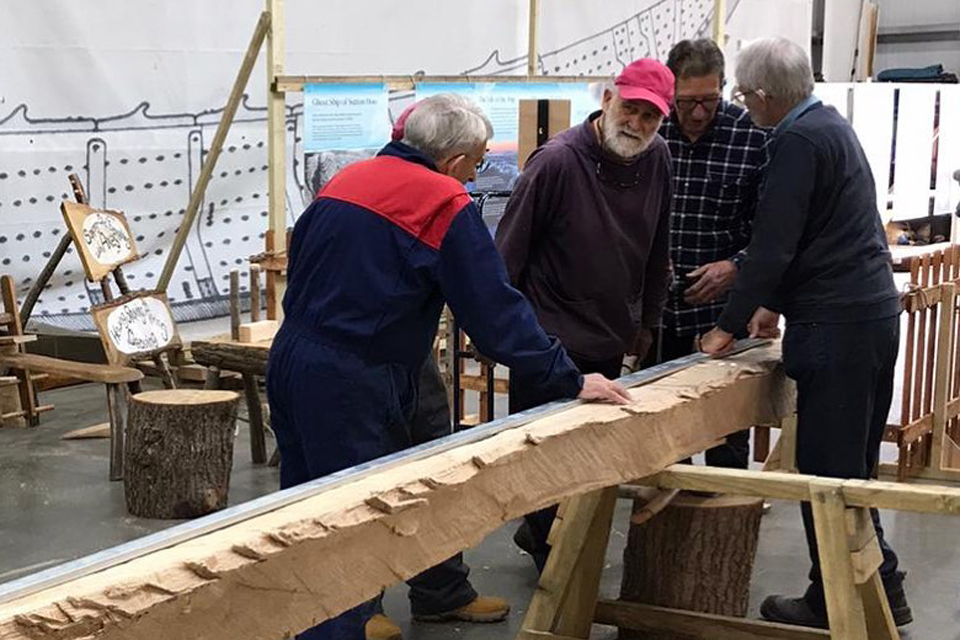Fundraising has begun the first full-scale reconstruction of the ship from Sutton Hoo. Help finance the project estimated to £1 million by shopping for your Christmas gifts at the Company’s website.
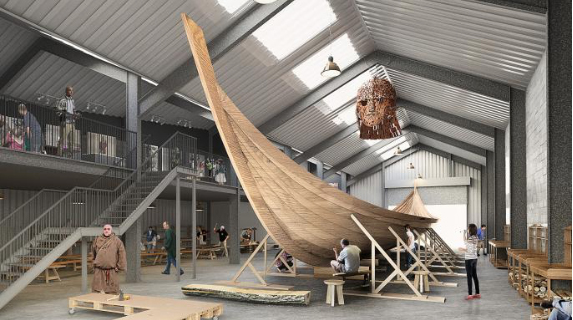
For several years, the Sutton Hoo Ship’s Company has worked to establish the models and find the funding for the reconstruction of the famous 7th-century ship from Sutton Hoo. Believed to be the burial place for Raedwald who died ca. 624, the grave was discovered in a mound in 1939. Apart from the magnificent treasures buried with the king, the ghost of a 27m long ship was easily discernible.
Readwald was king of East Anglia and a member of the Wuffingas dynasty and reigned from 599 to 624. Based on Bede, he is generally acknowledged to have ruled as an overlord or Bretwalda, “Britain-Ruler”. He converted to Christianity while at the same time maintaining a pagan temple.
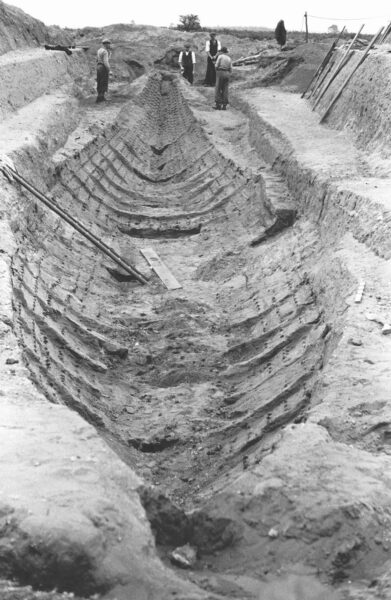
The grave at Sutton Hoo with its extraordinary finds partly mirrors the life-world of Beowulf and the material culture of the early Vendel graves in Sweden. It has recently been speculated that the pagan wife of Raedwald heralded from a Danish royal milieu (perhaps from Lejre or Gudenåen); and that some of the artefacts in the burial chamber aboard the ship were part of royal gifts received by Raedwald together with the poem or a precursor.
In 2016, the Ship’s Company was formed with the sole purpose of creating a permanent replica of the ship. The ship will be built in the newly opened shipyard at Longshed in Woodbridge, where visitors will be welcomed at all times.
“The Ship’s Company intends to be completely open and transparent in the way that they are using research and making decisions. Anything about the research and build process will be shared publicly to generate an extra layer of scrutiny, and any feedback will be gratefully accepted”, the Company writes. Nevertheless, the papers form the scientific symposium held in August 2018 are still under wraps. One of the challenges is to reconstruct the exact proportions of the ship. However, experience from the recent scientifically based reconstruction of the famous Nydam-boat from ca. AD 320 will be invaluable. Another question touches upon how the ship was propelled? By rowing? Or sail? The first reconstruction of the Sutton Hoo ship, which was carried out in half size and set with sails. Whether the new full-scale replica is destined to be fitted out in the same manner remains to be seen.
The reconstruction will be carried out in close collaboration with the University of Southampton as well as archaeologists from Scandinavia.
Already, the Queen of England has donated twelve oak-trees from the park at Windsor castle. One of these will be used to reconstruct the 18m long keel. Now, the public is invited to shop for their Christmas gifts, lay their hands on replicas of oars, rivets, rib bolts or iron spikes and contribute to the 1 million needed to execute the project.
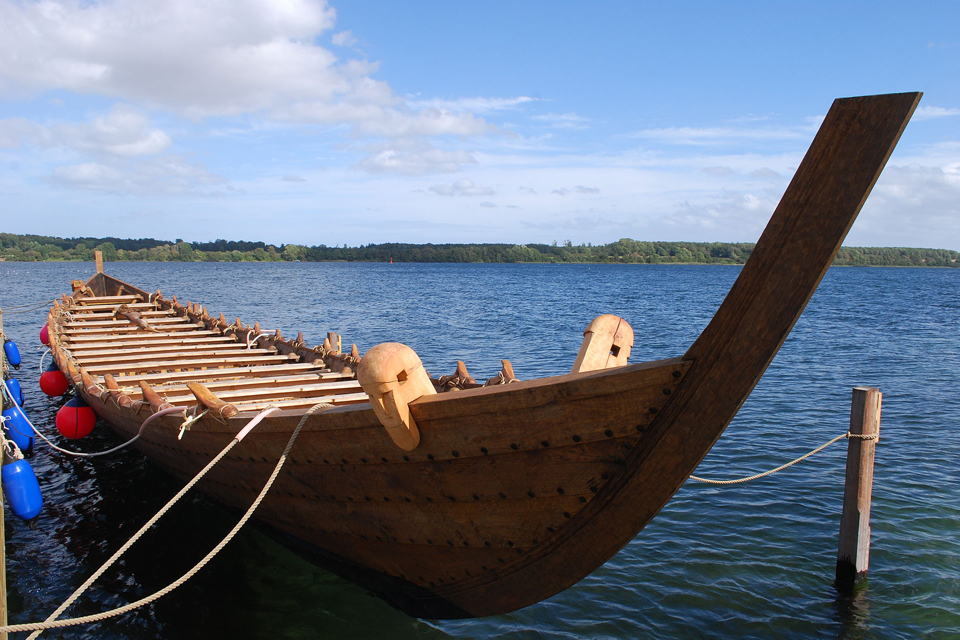
Sutton Hoo Revamped
Meanwhile, at Sutton Hoo the National Trust has launched £4 million-worth of new ‘displays, exhibitions and immersive experiences’ to tell the whole archaeological saga.
Along with a new route through the landscape, the exhibitions will help visitors to reconnect to the stories and people associated with the ship and its discovery within the Royal Burial Ground itself.
A 27-metre long sculpture representing the burial ship greets visitors to the Exhibition Hall and Tranmer House. Both of these building have been completely transformed.
The enlarged Exhibition Hall presents replicas of the original finds now in the British Museum and original pieces from the more recent excavations in the project initiated by the Society of Antiquaries and the British Museum and directed by Martin Carver. Also, the exhibitions include two special new exhibitions exploring the landscape, the natural history of the river and the settlements in the immediate neighbourhood.
A 17-metre high observation tower – whose construction was preceded by more excavation last year – will open in the autumn to offer views across the burial ground to the wider landscape.
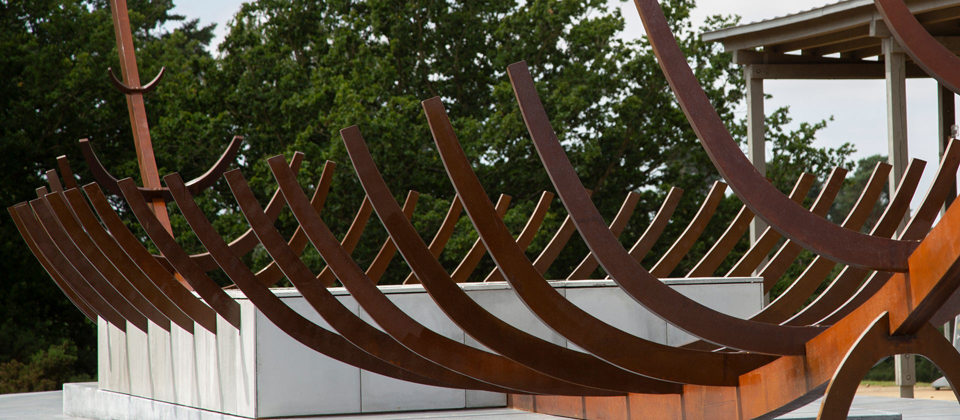
VISIT:
The Sutton Hoo Ship’s Company
The Longshed, Tide Mill Way, Woodbridge, Suffolk
Sutton Hoo. Awe-inspiring Anglo-Saxon royal burial site
Tranmer House, Sutton Hoo, Woodbridge, Suffolk
Sutton Hoo and Europe. AD 300–1100
British Museum, London
The Sir Paul and Lady Ruddock Gallery
SOURCES:
Sutton Hoo and Sweden revisited.
By Alex Woolf
In: The Long Seventh Century. Continuity and Discontinuity in an Age of Transition.
Ed. by Alessandro Gnasso, Emanuele E. Intagliata, Thomas J. MacMaster and Bethan N. Morris. Bern, Peter Lang 2015, pp. 5 – 18.
Between Sutton Hoo and Oseberg – dendrochronology and the origins of the ship burial tradition
By Niels Bonde and Frans-Arne Stylegar
In: Danish Journal of Archaeology. Published online: 07.11.2016
Stone Ships: continuity and change in Scandinavian prehistory.
By Peter Skoglund
In: World Archaeology (2008) Vol 40., Issue 3. Pp. 390 – 406
The sailing characteristics of Saxon ships
By Edwin Gifford and Joyce Gifford
In: Archaeonautica Année Vol 14 (1998), pp. 177-184
READ MORE:
